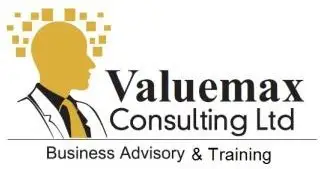IDENTIFYING OCCUPATIONAL HALTH AND SAFETY (OHS) HAZARDS AND MANAGING RISKS
How do workplace accidents or illnesses affect your company? If an employee gets hurt or falls sick, what kind of chaos does it bring? Does it slow down your output? How does it influence the rest of your team, whether through extra tasks or effects on their mental state and overall wellness?
Your employees are the backbone of your company. That is why handling workplace safety and wellness properly is key to thriving. If you don’t address dangers to their physical and mental health, it can weaken your business’s goals, limit its growth, and threaten its staying power. This makes it vital to recognize risks, create plans to lower them, and foster an environment that keeps your team safe and supported.
Implementing a robust Occupational Health and Safety Management System(ISO 45001) is a proven way to prevent accidents and ill health, and protect your organization’s long-term viability through its most valuable asset – its people.

What is an OHS Hazard
An OHS hazard is anything that could hurt someone at work. It is not the injury itself, but the thing that could cause it. Think of a wet floor in a kitchen, a noisy machine in a factory, or even stress from tight deadlines. Hazards are everywhere and spotting them is the first step to keeping people safe.

Types of hazards
Physical Hazards

Things you can see or touch that might cause harm.
Example: A delivery worker trips over boxes left in a walkway, twisting an ankle.
Chemical Hazards
Dangerous substances that can make people sick.
Example: A cleaner breathes in strong bleach fumes without proper ventilation.

Biological Hazards

Germs or living things that spread illness.
Example: A nurse catches a virus from a patient because gloves were not available.
Ergonomic Hazards
Problems from how people work with their bodies.
Example: A typist gets back pain from using a bad chair and keyboard setup for hours.

Psychological Hazards

Stress or mental strain from work.
Example: A call centre worker feels overwhelmed by constant angry customers and no breaks.
Ignoring hazards is not cheap. When someone gets hurt or sick because of work, it hits your business hard. There is the obvious stuff: medical bills, lost workdays, or replacing broken equipment.
For example, if a construction worker falls off a shaky ladder, you are paying for their recovery and maybe a new ladder. But it goes deeper—productivity drops when people are out, morale sinks if workers feel unsafe, and you could face fines or lawsuits. The real cost? It is not just money—it is people.

How to Reduce OHS Risks
- Spot the Hazards: Walk around your workplace and look for trouble spots. Ask your team what worries them. That wet floor? Someone is bound to slip if it is not mopped up.
- Plan Ahead: Decide what is most dangerous and fix it first. For example, put up a “Wet Floor” sign or repair that leaky pipe before someone falls.
- Use the Right Tools: Give workers what they need to stay safe. A factory worker handling chemicals should have gloves and a mask—no excuses.
- Train Everyone: Show your team how to avoid trouble. Teach a warehouse worker how to lift heavy boxes without hurting their back.
- Check Regularly: Keep an eye on things. If that noisy machine gets louder, fix it before it damages someone’s hearing.
How Your Business Will Benefit
Managing hazards is not just about avoiding trouble—it makes your business better. When workers feel safe, they are happier and stick around longer. That means less time hiring and training new people. Productivity goes up because no one’s out injured—a delivery company cut delays by 20% after fixing slippery truck ramps. Plus, customers and partners notice when you care about safety. It builds trust. And if regulators come knocking, you are covered—no fines, no stress.


